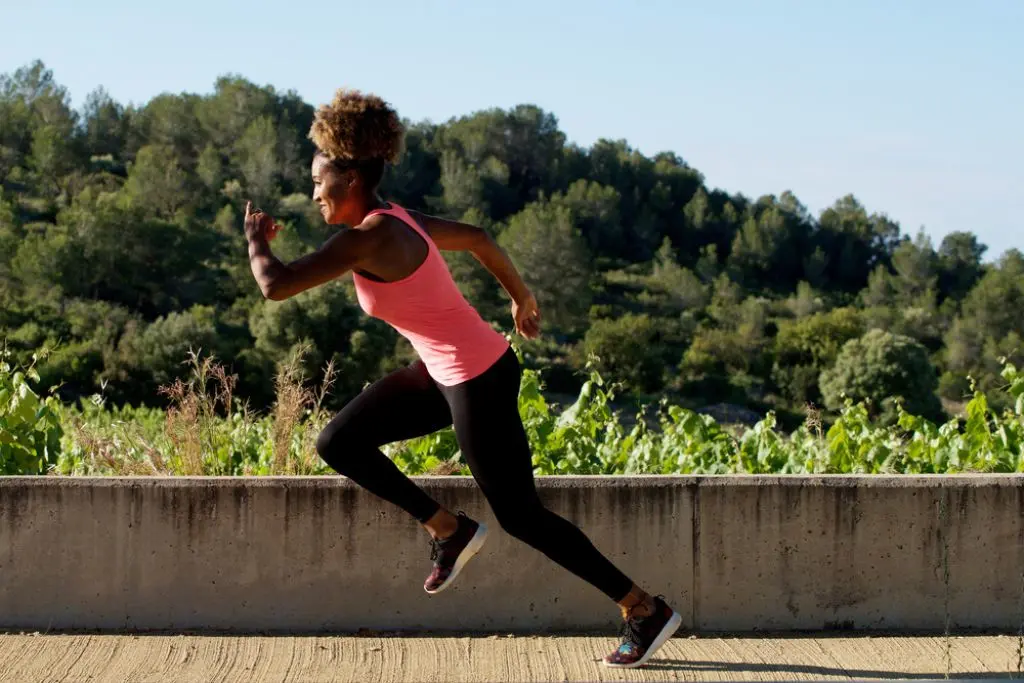Incline Walking Vs Running: Which Is Better?

November 22, 2022

Making cardio a regular part of your workout schedule is going to have a wide range of health benefits, such as boosting your mood and fitness, reducing your risk of disease, and strengthening your bones and joints.
Running and walking are two of the most popular ways to reap the benefits of cardio, not to mention great ways to smash your daily step target or get outside and enjoy the goodness nature has to offer, but what about incline walking? How does walking uphill, either outdoors or on a treadmill, measure up compared to running? Let’s find out.
Cardiovascular fitness
Whether you’re out for a jog, walking uphill or clocking up your steps on an inclined treadmill, you’re going to experience an increased heart rate, feel your breathing pick up, and see improvements in your cardio fitness over time.
Giving your cardio system an extra challenge is easy enough for both, simply increase the intensity. This could mean increasing the pace of your run or walk, bumping up the incline setting if you’re on a treadmill, or performing sprint intervals (aka HIIT).
If you prefer walking but want to increase your cardio fitness, walking at an incline is a great way to do that! Research from 2018 explored the cardiovascular effects of walking uphill, downhill or on level ground and their results gave a big thumbs up to incline walking. Level and downhill walking showed a similar cardiovascular response, but uphill walking saw a significantly increased response.
However, if your goal is to achieve your maximum level of cardio fitness or improve your VO2 max (how efficiently your body takes up oxygen during exercise), running or sprinting would trump incline walking.

Muscle strengthening
Although we typically think of lifting weights and performing movements like squats and push-ups when we hear the phrase “strength training”, that doesn’t mean aerobic exercise does nothing to help strengthen your muscles.
2014 Research published in Exercise and Sports Sciences Reviews showed aerobic exercise can produce muscle hypertrophy (an increase in muscle strength and size) while also improving muscle function and exercise capacity. The key is to make sure you’re exercising at a high intensity (70-80% of your heart rate reserve), for a duration of 30-45 minutes, several days per week.
Walking on an incline involves extra resistance than jogging and will engage your glutes, quads, hamstrings, calves and even your core to maintain good posture. The higher the incline, the more of a strength workout it’s going to be.
Of course running will work your muscles as well, but heading out for regular jogs at a steady pace unfortunately isn’t going to result in significant gains when it comes to your muscle strength or mass.
If you want to build muscle by running, you need to really challenge your muscles and crank up the intensity. The best way to do that? Sprints. Head Trainer Kayla Itsines loves sprint training and her favourite way to do it is hopping on her treadmill for intervals of 20-second sprints, followed by 20 seconds of rest, for a total of 7-10 minutes. It’s short, sharp and one heck of a workout.
Keep in mind, if your primary fitness goal is gaining muscle strength and size, you are much better off following a strength training program such as PWR or BUILD.

Impact and injury
Because everyone’s bodies are different, different training styles are better suited to different people and the same goes for running and incline walking.
When you walk, at least one foot is always connected to the ground, meaning less stress on your knees and other joints and lower injury risk compared to running, which is a higher-impact exercise and can be difficult for those with joint issues or previous injuries.
2014 research exploring the influence of incline walking on joint mechanics also found it could have positive effects on knee joint health such as reducing pain and cartilage degeneration of the knee joint, and decreasing the rate of development of osteoarthritis.
While incline walking is the better option for your joints, the only thing to be wary of if you have joint issues is to make sure you’re using a treadmill. Performing incline walking outside on real hills means you’ll eventually have to walk downhill (after all, what goes up must come down!), and this can hurt your knees or exacerbate existing issues.
One 2015 study investigated the effect of uphill and downhill walking on the healthy knee joints of 24 non-professional sportswomen. They tested joint position before exercising, after 30 minutes of uphill walking and after 30 minutes of downhill walking, finding that downhill walking impairs the knee joint position.
It also pays to include a good warm-up before incline walking, as lifting your knees higher than you would when walking on flat ground will work your hip flexors more.

Base fitness level
Running and incline walking both require a higher level of fitness than walking on flat ground, and running requires a higher level of fitness than incline walking.
If you’re just starting out on your fitness journey or are wanting to start running or walking up hills, try these simple progressions:
Run or walk uphill for 30 seconds, then walk on flat ground for 30 seconds. Continue with these intervals and increase the time spent running or incline walking as your fitness builds.
If your fitness goal is to run or walk at an incline for a certain distance or length of time without stopping, focus on building endurance rather than speed. Think slow and steady! Find a running or incline walking pace you can sustain for five minutes, then progress to 10, 20 or 30 minutes (and beyond!).
If your goal is to build strength, you’ll want to focus on moving in a way that requires power. This could look like sprint interval training, or setting your treadmill to a high incline setting to really challenge your muscles.
Convenience
This all comes down to what you have access to! If you have a treadmill at home, a gym membership or live in a hilly area, incline walking is an easy option, otherwise it might be a challenge.
For many people, running is a more convenient option as all you need is a pair of trainers and some comfy workout clothes (and we would highly recommend a banging playlist).
People often compare running vs incline walking and ask, which is better? But when there are so many different factors at play, the key is to ask - which is better for what?
Running and incline walking are both great forms of cardio and provide many benefits, so deciding between the two will come down to your individual fitness goals, what you have access to, any injuries or joint issues, and one of the most important things - what kind of movement you actually enjoy!

A more empowered you starts with Sweat, and our editorial team is here to bring you the latest fitness tips, trainer recommendations, wellbeing news, nutritional advice, nourishing recipes and free workouts.
* Disclaimer: This blog post is not intended to replace the advice of a medical professional. The above information should not be used to diagnose, treat, or prevent any disease or medical condition. Please consult your doctor before making any changes to your diet, sleep methods, daily activity, or fitness routine. Sweat assumes no responsibility for any personal injury or damage sustained by any recommendations, opinions, or advice given in this article.
Fitness